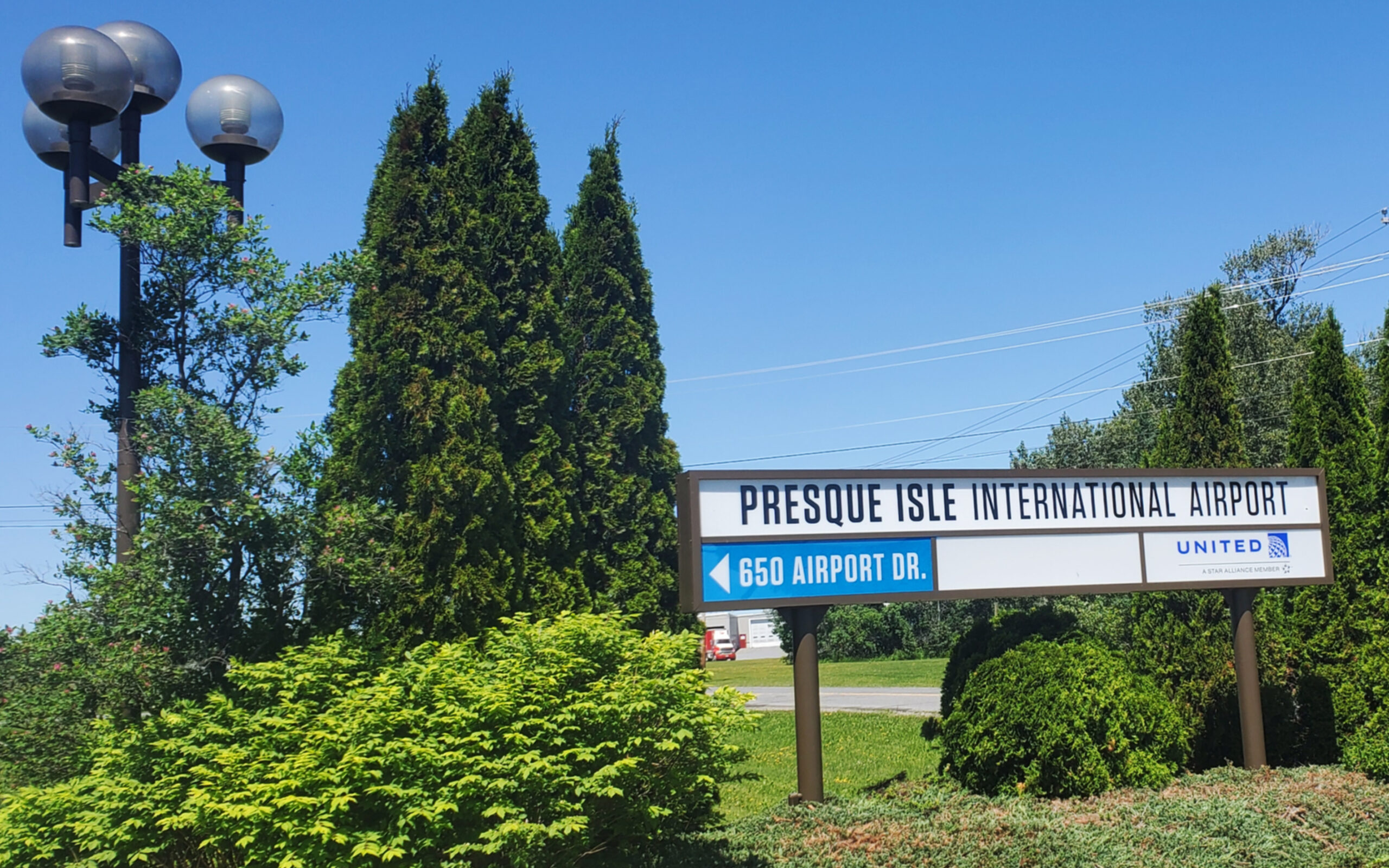PRESQUE ISLE, Maine — The Presque Isle International Airport will receive more than $7 million between two separate grants this year to improve infrastructure through the Federal Aviation Administration’s Airport Improvement Program.
Almost $10 million will be split between Presque Isle and Lewiston-Auburn airports with Presque Isle receiving the majority of funds, according to an announcement Sept. 23 from U.S. Sen. Susan Collins’ office.
In recent years, the airport has received substantial funding from the FAA to help improve operations.
Since 2015, the agency has provided Presque Isle airport with more than $9 million, according to grant history data provided by the FAA — but that number doesn’t include the latest $6.7 million grant Collins announced on Tuesday.
On Monday, the FAA announced that Presque Isle would receive another $1,074,816 to purchase snow removal equipment. While these are both funded through the airport improvement program, they are two separate grants, Kathleen Bergen, manager of communications for the FAA, confirmed.
With both of the grants awarded this year, the airport will have received more than $16.5 million since 2015 for various costs including investments in infrastructure and equipment.
The first grant in 2019, which was awarded in June, will go toward purchasing runway sweepers, said Airport Director Scott Wardwell.
The sweepers are necessary to comply with new federal regulations for runway safety, according to Wardwell. The new machines, which he described as operating like giant brooms, are supposed to sweep large amounts of snow off the runway to avoid ice sticking to the pavement.
“By getting as much of that snow off as possible you reduce the chances of creating ice … ice is really almost totally prohibited from being on the runway now,” Wardwell said.
“It’s definitely going to significantly increase our ability to broom this stuff off,” he said.
The machines, which are made to order, are expected to arrive sometime in February 2020.
Improving the airport’s operations has long been a point of focus, even before a United Express passenger plane missed the runway and crash-landed at the airport this past March.
During a Transportation Appropriations Subcommittee hearing several weeks after the incident, U.S. Department of Transportation Secretary, Elaine Chao, told Collins that the FFA was supposed to be working with the airport to prevent a similar accident from happening again in the future.
Later that month, investigators released a preliminary report on the accident but didn’t disclose what caused it. The full investigation is not expected to be completed for 12-18 months.
Wardwell wouldn’t say what he thought caused the accident but maintained that the improvements are part of a larger plan to upgrade the airport to current federal regulations.
“When any incident happens, it tends to focus things a little bit more,” he said. “It’s all safety-related.”
“The FFA changed dramatically what it would allow on runways and we’re still going through the process of incorporating those changes,” Wardwell said. “So essentially we’re transitioning to a new requirement.”
In the preliminary report on the crash-landing from March, the NTSB said that the plane landed between the taxiway and runway, in light to moderate snow.
Wardwell said that in April he was in discussions with the FAA about securing the funding for the sweepers, to better clear off the runway for aircrafts.
With the purchase of the two new runway sweepers, the airport will be operating with three total machines, the maximum amount of sweepers for the airport’s size allowed by the FAA, Wardwell said.
The additional $6.7 million grant announced by Collins on Sept. 23, will be used to continue the second phase of rebuilding the commercial aviation ramp.
With this money, the airport will remove and replace the pavement and base material of the ramp. In addition, they are going to remove an older hangar built in the 1970’s, from the base because it doesn’t meet current fire regulations, Wardwell said.
Some construction may begin before snow falls this year but the vast majority of the work should be completed by next spring or summer, he said.








